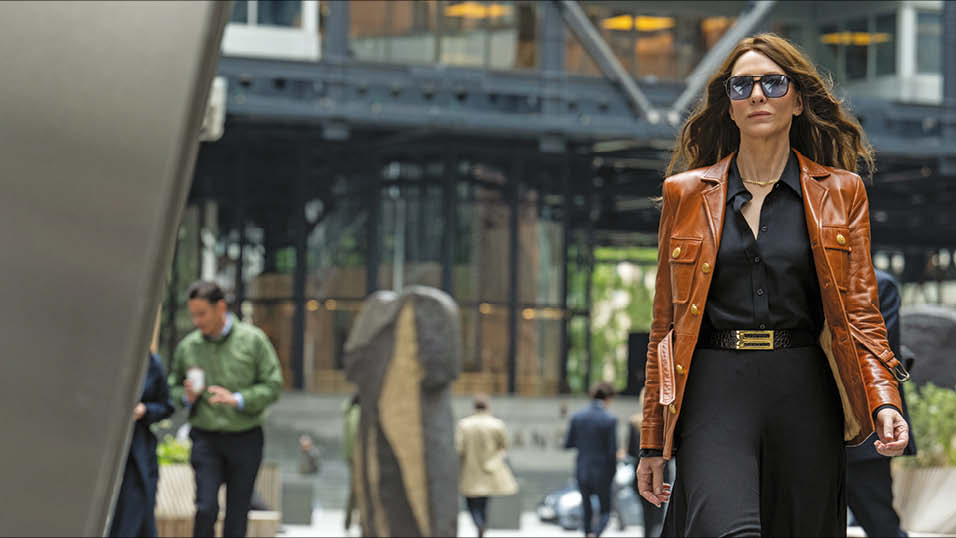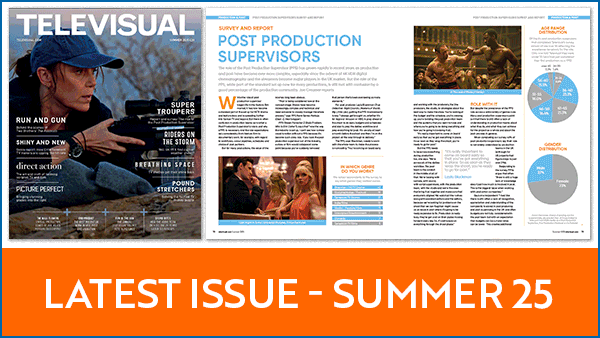The UK’s vfx industry has become a world beating business, but negotiating the post Brexit landscape will be crucial for keeping it on top. Jon Creamer reports
The UK vfx sector is undoubtedly a major national success story with its growth outstripping pretty much any other sector in recent years.
Last year’s Screen Business report commissioned by the BFI found that the vfx spend on tax relief incentivised productions generated £773.9 million Gross Value Added (GVA) for the economy.
Add to that the vfx spend from advertising and other work like immersive media not eligible for tax relief and the total value of vfx to the UK economy was estimated at just over £1bn a year. And that total doesn’t include any spill-over value that advertising itself creates. The vfx industry also directly employs 8,140 people and supports a total of 17,490 jobs in the extended value chain.

Commercial Break
In the advertising world, the vfx houses are busy, but in a time of great change. “Advertising is always pretty turbulent,” says MPC London and Amsterdam md, Jonathan Davies. “In London, it’s a very crowded marketplace and there’s been some new start-ups opened this year so there’s more people competing for the same pot of work. You have to be on top of your game to win it.”
And the type of advertising work done by those vfx houses is changing rapidly. “For years, The Mill and others produced vfx for linear TV for broadcast ads, by and large,” says md Robin Shenfield. Now, The Mill also makes products like car rig The Blackbird, real time puppeteering system Mascot, and other activities outside the linear TV realm. “We’re producing a much more diverse range of what you could broadly call advertising content for lots of different channels and experiences where the visual content is a very important part but not the entire experience.”
And the customer base has changed rapidly. “The lines have been blurred over the years,” says MPC’s Davies. “We do traditional visual effects, immersive, live action production. Sometimes we work for production companies, sometimes for an agency with a production company, sometimes for a brand direct. There are a lot of production companies, there are a lot of big agencies, a lot of small agencies. It’s a lot more complicated than it used to be.”

Hitting the Ceiling
Over in vfx for film and TV, the biggest vfx-heavy movies and TV shows of the last decade would show the fingerprints of UK vfx houses both big and boutique, all over them. And film and TV production is certainly on a roll. Feature film production in the UK has more than doubled since the introduction of its tax relief in 2007, high end TV has done the same in the shorter period since its tax relief went through in 2013. Most established film facilities are expanding, and new ones are rushing to come online.
But that massive boom in production in the UK does not always work in the favour of vfx. With so much production on a film or high-end TV project based in the UK, often a production’s tax credit ceiling can be hit before vfx gets its share. Due to EU state aid laws, projects can only get tax relief on 80% of the total budget. “We’re starting to hit the EU state aid cap before you get to vfx and post,” says Neil Hatton, chief exec of industry trade body, UK Screen Alliance. “You can only receive tax credit on 80% of the total production budget. If you do a lot of shooting in the UK it’s probably likely that you’ll hit the cap. There’s nothing to stop you doing your vfx in the UK, you just won’t get the tax credit on it.” And as the growth market is the relatively more cash strapped SVOD productions, maximising tax credits for them is a priority.
That means “the more UK centric the production is, the more pressure it puts on taking the vfx out of the country,” says Framestore’s CEO, William Sargent. “That’s an anomaly.” It’s an anomoly that can see UK vfx houses winning work through their UK base, but then completing much of it through their Canadian subsidiaries. “Productions are looking to maximise whatever tax rebate they can on that visual effects spend, which perhaps means talking to a production through the UK location, but discussing what the options might be in Montreal and in Vancouver with their notable tax credit. That’s challenging,” says Cinesite’s chief VFX business development officer, Drew Jones.

Removing the Cap
At first glance, Brexit may have some effect on that problem. If no longer part of the EU, then the UK is not subject to its state aid rules. “If there could be an upside that I could perceive out of Brexit it would be that we should be allowed to regulate the vfx tax break on vfx spend alone,” says Outpost VFX founder, Duncan McWilliam. “One of the fastest growing parts of the film business is vfx, so surely we should open up a VFX only tax credit and make it very easy to apply for.” It’s something many in the industry have pushed for, but simply leaving the EU doesn’t necessarily solve the problem. “I’d be reluctant to forecast anything to do with Brexit,” says Framestore’s Sargent. “However, I would observe that, if you want to trade with a trading block, you tend to have to observe their rules. This is the irony of Brexit; you can leave but that doesn’t mean you don’t have to abide by their rules if you want to trade with the single largest trade body that we trade with.” Says Hatton. “If we did a trade deal, would it come straight back on us? The UK government is supportive of state aid legislation for other reasons, so we would have to make a case.” And realistically, it would have to be a case that would be looked on favourably by the EU.
And that case could be that breaking through those state aid rules doesn’t adversely affect either the EU, or a post Brexit UK. “Once you hit the cap, that’s not going to send vfx work from the UK to Europe, it’s going to send it to Canada, so it doesn’t benefit the EU in any way. Its something we should investigate,” says Hatton. But until the Brexit fog clears, it’s a vague hope at best.

The Talent Show
The downsides of Brexit are pretty universally agreed upon. A recession following a no deal Brexit is widely predicted and “we’re all directly affected, even in our industry, which is at the moment buoyant,” says Jellyfish Pictures CEO, Phil Dobree. “It is slightly concerning how no deal will affect our clients. Because if everyone starts pulling their horns in…”
The other big elephant in the room is talent. Whatever sector of the vfx market, it is very much a talent-based business. Vfx projects have become more involved, more complex and demand a huge range of different skills. Having the best people is key, as is a diverse pool of people that have grown up in different countries with different experiences. The UK, and London in particular, owes much of its vfx success to being a big melting pot of talent with a large proportion of employees from the EU.
It seems likely that current EU employees will be able to continue as before, but the bigger worry is about vfx artists who haven’t come here yet. Brexit is of course unpredictable, but “I can’t see free movement continuing,” says Hatton. What replaces it is unknown. But it seems certain that EU nationals won’t be as free to come to work in the UK as before. And that “might stem the flow of talent,” says Jellyfish’s Dobree. “Because they’re thinking ‘Can I really make a career, and my life in London?”

The Brain Drain
However benign any new system is, “the psychological damage is there,” says Framestore’s Sargent. “[Brexit uncertainty] has been going on for three years. If it’s settled on 31st October, it will still be there for a further two years” while a deal is done. “You still won’t quite know for a year after that what is really the case, how is the Home Office behaving and so forth. And so you’re talking about a five-year window in which people psychologically will feel uncertain and unwelcome.”
And the damage could already be happening. “I’m sure four years ago, when we were putting out job adverts, we were getting applications from all over Europe for people coming across for the first time to England,” says Outpost’s McWilliam. “And now I see our applications going out and, as much as any nationality applies, they tend to already be based in London or in England already. They’re not people moving country.”
And that could be damaging to the UK’s vfx pre-eminence in the long term if EU talent opts to stay in the EU. “Other countries are building their vfx capability, so our strength is certainly being diluted at the moment. I wouldn’t say its huge. But the point is once it starts it gathers momentum,” says Sargent.
Some are already hedging for that possibility. “It’s probably been an influence I would say in our decision to open The Mill in Berlin,” says Shenfield. “Having a base in mainland Europe, in particular, in Berlin, where there’s a lot of interesting things going on culturally and creatively, perhaps there’s a little bit of hedging in our mind around that.”

Current talk of Australian style points systems and high visa costs could be a significant problem for the UK vfx sector. “If suddenly there are major increases in these fees, and there’s a major lengthening of the visa processing scenario, then that will only exacerbate what really is already a skill shortage in the UK,” says Cinesite’s Jones. “We could not run these companies on just UK talent. The nature of the business is it’s very ebb and flow. We’re constantly expanding and contracting, and it has to be done quickly.”
If visa costs and immigration skills charges (charges that incidentally do not go directly to any training) for EU nationals replicate those for non-Eu nationals, there is a very significant cost implication for all UK vfx companies that have an average of 33% EU nationals in their workforce. The current salary threshold for non-EU nationals is £30k and if raw EU recruits have to come in in at more than £30k “that will start to move the differentials of everybody,” says Hatton. “You can’t say ‘here’s a brand-new animator on £30k but you’ve been doing it for two years and you’re on less than that.’ That’s going to cause unrest. To move everybody up would put £18m of expense into the budget.”
The vfx sector has to make its voice heard now while the political situation is fluid. “We have got the potential, particularly as other parts of the economy will not be as buoyant after Brexit, to remain buoyant,” says Hatton. Influencing whatever government is in place will be key. “We have stability in the tax credits system, that’s not going to change and that’s the big message for people over the pond. There will be workforce challenges from 2021 onwards, but we’re dealing with them. And then there’s still the possibility that it’ll all be a bad dream.” You never know.
Jon Creamer
Share this story

















